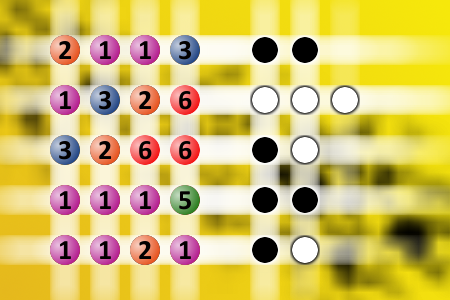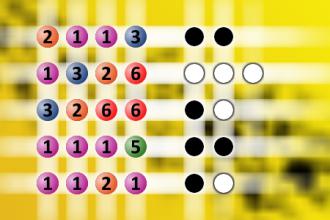Find the right combination
The computer chose a secret code (sequence of 4 digits from 1 to 6). Your goal is to find that code. Black circles indicate the number of hits on the right spot. White circles indicate the number of hits on the wrong spot.Correct answers: 21
The first user who solved this task is Nasrin 24 T.
#brainteasers #mastermind

A blonde and a brunette are ou...
A blonde and a brunette are out driving, and the brunette tells the blonde to look out for cops - especially cops with their lights on. After they've been driving for a while, the brunette asks the blonde if she's seen any cops.
"Yes," says the blonde.
"Are their lights on?"
The blonde has to think for a moment, then says, "Yes. No. Yes. No. Yes. No."
"Yes," says the blonde.
"Are their lights on?"
The blonde has to think for a moment, then says, "Yes. No. Yes. No. Yes. No."

